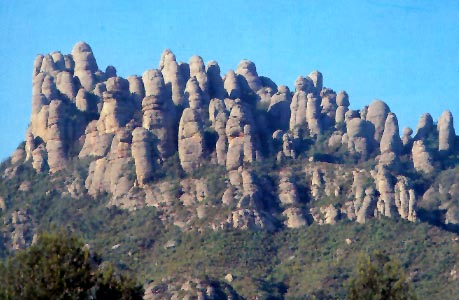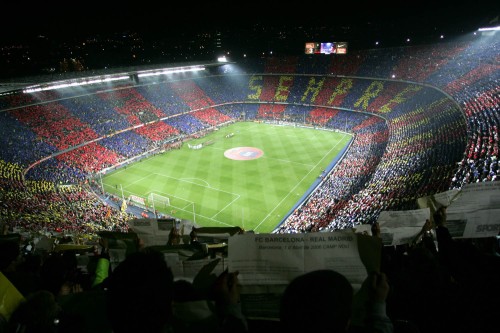ATLÉTICO – FC BARCELONA, SUNDAY 14 FEBRUARY 2010
The black legend of Barça in the Calderón stadium lives another episode
The Jeffren-as-winger experiment horribly fails; debutant Bartra gets slightly better in the second half of the game
FC Barcelona looses its first game of the season, but remains two points ahead of Real Madrid
Two defeats in their last visits to the Calderón and only one victory in the last eight years give away how hard it’s always been for Barça to win in the red-white feud. Well, a new episode of the black legend of the Atlético-Barça games has just been written.
A disastrous start and an incapacity to change course left Barça out of the game and the box “defeat” could be tacked when Atlético made their first goal. Barça had to do without several major players, and when there’s no Messi’s and Xavi’s, this obviously gives the team a hard time. Where left with having to think positively, and to speak about the two points that we’re ahead of Madrid. A little accident, that’s all.
Next Sunday, Barça will be playing home again the Camp Nou, where it most likely won’t have as many issues with Racing. If you’re around, check out Barcelona before the game on a guided Barcelona city tour.
Filed under: Uncategorized | Leave a Comment
The Montserrat Mountain
The mountain of Montserrat, according to tradition, the most important and mysterious mountain of Catalonia (Spain). It is located 50 km northwest of Barcelona between the Anoia, Baix Llobregat and Bages. On this mountain stands the Benedictine monastery and shrine dedicated to Our Lady of Montserrat.
The word means mountain and “serrat” in Catalan means “sawn”. That name comes because of its distinctive morphology in which it seems as if someone had tried to saw it with a giant saw. Both the word as serralada serrat (range) are from serra, derived from the Latin serra, name given to the instrument for sawing. In heraldic representations, Montserrat appears as a group of mountains of gold on a red field with a mountain of gold over the short.
This is a unique form massif that rises abruptly to the west of the Llobregat River to the 1236 meters high peak of St. Jerome. Other prominent peaks are the Cavall Bernat, the Agulles, the Serrat del Moro, the Montgròs, Sant Joan and Palomera. In 1987 he was declared a nature to ensure its preservation.
For millennia, tectonic movements, climatic changes and erosion have shaped sharp relief, with huge walls and rounded blocks of conglomerate rock and clay. Inside physical agents have opened caves and streams.
The quintessential Mediterranean forest is also the predominant vegetation type in Montserrat. With respect to wildlife, now you can find various birds and mammals, among which the squirrel, a bat or wild boar and wild goats.
Getting to Montserrat isn’t the easiest thing ever, so if you’re ever in Barcelona, it’s wise to take a Barcelona Montserrat tour.
Filed under: Culture, History | Leave a Comment
Hello world!
Welcome to WordPress.com. This is your first post. Edit or delete it and start blogging!
Filed under: Uncategorized | 1 Comment




 Bullfighting, apart from the widespread criticism it evokes, can still be seen in Spain. In Catalunya it was banned for over a decade, but revived a few years ago. The one place to see bullfights in Barcelona is in Monumental, at the Plaça de Torres. You can take a
Bullfighting, apart from the widespread criticism it evokes, can still be seen in Spain. In Catalunya it was banned for over a decade, but revived a few years ago. The one place to see bullfights in Barcelona is in Monumental, at the Plaça de Torres. You can take a 
